![]()
![]()
![]()
Use LEFT and RIGHT arrow keys to navigate between flashcards;
Use UP and DOWN arrow keys to flip the card;
H to show hint;
A reads text to speech;
56 Cards in this Set
- Front
- Back
|
connective tissue functions |
1. Connects and anchors 2. Supports organs 3. Protection and padding 4. Repair 5. Line of defense in the inflammatory and immune systems |
|
|
mesenchyme |
the simplest form of embryonic connective composed of mesenchymalcells, amorphous ground substance and very few fibers |
|
|
mesenchymal cells |
stellate-shaped with a minimum number of organelles. These cells are multipotential in that they can differentiate into all types of connective tissue proper as well as cartilage, bone and blood. |
|
|
Extracellular Matrix |
the substance between cells composed of amorphous ground substance,fibers and fluid. |
|
|
amorphous ground substance |
a material without structure that is secreted by and surrounds the cell. 1) Determines the hardness and viscosity of a tissue 2) Regulates the movement of substances between cells |
|
|
Proteoglycans |
complex glycoproteins that are formed by a central core protein that is heavily bounded by carbohydrates. The carbohydrate is composed of linear repeating units of disaccharides (two sugars) in which one sugar is in its acid form and the other has an amino group attached. The repeating unit of carbohydrate is called a glycosaminoglycan. |
|
|
glycosaminoglycans (GAGS) |
complex carbohydrates that are composed of linear repeating units of disaccharides (two sugars) in which one sugar is in its acid form (COOH group) and the other has an amino group (NH2). |
|
|
chchondroitin sulfate |
GAG found primarily in cartilage and bone |
|
|
dermatan sulfate |
GAG found primarily in the C.T. of skin |
|
|
Keratan sulfate |
GAG found primarily in cartilage |
|
|
Heparan sulfate |
GAG found primarily in basement membrane |
|
|
Hyaluronic acid |
GAG found primarily in cartilage and loose C.T. |
|
|
Proteoglycan aggregates |
large glycoprotein molecules in the amorphous ground substance composed of numerous proteoglycan subunits attached to hyaluronic acid. |
|
|
collagen |
the most abundant fiber type in the body high tensile strength, major supporting role found in most tendons and ligaments |
|
|
collagen fibrils |
formed by staggered tropocollagen units appear striated due to overlapping of tropocollagen |
|
|
type I collagen |
collagen found in tendons, ligaments, bone, dentin, and dermis of skin |
|
|
type II collagen |
collagen found in cartilage |
|
|
type III collagen |
collagen found in reticular fibers, dental pulp, lymph nodes, and bone marrow |
|
|
type IV collagen |
collagen found in basement membrane |
|
|
reticular fibers |
-small diameter fibers that form a delicate supporting system for cells particularly in the bone marrow and lymphoid organs -composed of mostly Type III collagen combined with other glycoproteins -striated silver-loving, stain black with silver |
|
|
elastic fibers |
give elasticity and recoil to organs, are non-striated and do not have visible subunits contain an amorphous material called elastin, which is molded into a fiber by small microfibrils. These fibers are abundant in organs that need to stretch and recoil such as the aorta, lungs and elastic cartilage |
|
|
fixed cells |
adult C.T. cells that are a permament population of cells that form and maintain the amorphous ground substance and fibers within the C.T. fibroblasts and adipose cells |
|
|
wandering cells |
adult C.T. cells that are derived from the bone marrow and enter the peripheral circulation to reach connective tissue mast cells leukocytes |
|
|
fibroblasts |
the most numerous cells in connective tissue proper. The cell is irregular in shape and contains an abundance of rough endoplasmic reticulum. synthesis and secrete the building blocks of the fibers and amorphous ground substance found in the extracellular matrix function of this cell is the maintenance of the extracellular matrix |
|
|
adipose cell |
fat cell signet ring shape, nucelus is in a thin ring of cytoplasm around a large fat vacuole function is the storage of fat for energy |
|
|
macrophage |
large irregular shaped cells similar in structure to the fibroblast contain many large, irregularly shaped lysosomes containing acid phosphatase active phagocyte that engulfs foreign particles and worn out blood cells derived from monocytes |
|
|
plasma cell |
the antibody-forming cells of the immune system. oval in shape and is characterized by an eccentric (not in the center) nucleus and an abundance of rough endoplasmic reticulum. function is to destroy antigens during the humoral immune response by the release of antibodies. |
|
|
mast cells |
-large oval-shaped cells with an eccentric (not in the center) nucleus -aligned along blood vessels -contain an abundance of secretory granules -secrete histamine and heparin -function is to increase permeability of blood vessels during the inflammatory response |
|
|
neutrophils |
-the most abundant white blood cell representing 50-60% of the leukocyte population in peripheral blood -characterized by a segmented nucleus formed by 3-5 lobules. -contain specific granules containing many hydrolytic enzymes -first line of cellular defense against bacteria |
|
|
eosinophils |
-compose 1-4% of the leukocytes in normal blood. However, during allergic responses their numbers increase 20-30% -bilobed nucelus -function is to digest certain types of parasites and to phagocytize antigen-antibody complexes -modulate immune response by neutralizing substances secreted by the lymphocytes and histamine |
|
|
basophils |
-0.5% of leukocytes -U-shaped nucelus, blue staining granules -contains heparin and histamine like mast cells -function is to increase permeability of blood vessels during inflamation or immune response |
|
|
lymphocytes |
-20-35% of leukocytes in blood -no granules -very small, large nucleus -function in immune response -two classes: B and T |
|
|
B-lymphocytes |
involved in humoral immunity. When stimulated, these cells undergo mitosis and differentiate into plasma cells. |
|
|
T-lymphocytes |
-some varities involved in humoral immunity, others in cellular immune response -cellular: undergo mitosis and form killer T cells which destroy antigens and release lymphokines that attract macrophages and regulate other leukocytes -humoral: help B-lymphocytes recognize the difference between foreign anitgens and our own proteins |
|
|
monocyte |
-largest leukocyte, 3-8% in blood -large, kidney shaped nucleus -abundant cytoplasm -function is to form all the tissue macrophages including osteoclasts and cementoclasts |
|
|
loose/areolar connective tissue |
-C.T. characterized by a loosely woven network of fibers -mostly collagen, also some elastic and reticular fibers -wandering and fixed cells scattered throughout -binds structures together -pathway for blood vessels and nerves -pathway for body defense cells during immune response -generally found under every epithelial surface -initial site of defense against bacteria |
|
|
dense irregular connective tissue |
-C.T. containing an abundance of interwoven fibers and few cells, mostly fibroblasts -occurs in sheets surrounding muscles, forms capsules of organs, in dermis and lamina propria of gingiva -collagen most abundant fiber, some elastic, no reticular -supports and binds tissues together |
|
|
dense regular connective tissue |
-C.T. containing fibers organized in a regular, parallel fastion -fibers are tightly packed, included fibroblasts are flattened and parallel -makes up tendons and ligaments -mostly collagen |
|
|
reticular connective tissue |
-C.T. unique to lymph organs and bone marrow -composed of stellate shaped reticular cells held together by reticular fibers in fishnet appearance -supports lymphocytes or blood cells in corresponding tissue by suspending them in the spaces between cell processes |
|
|
adipose tissue |
-C.T. made of a large aggregation of adipose cells supported by a collagen framework -stores fat -insulates body from heat loss -forms a padding |
|
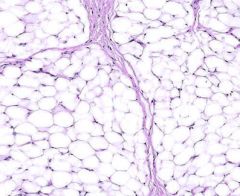
|
addipose tissue |
|
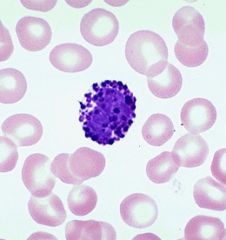
|
basophil |
|
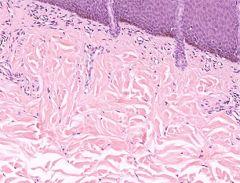
|
dense regular connective tissue |
|
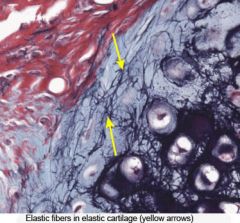
|
elastic fibers |
|
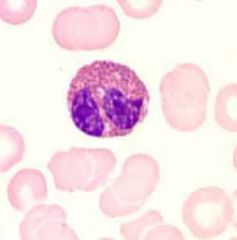
|
eosinophil |
|
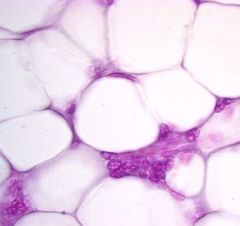
|
adipose cells |
|
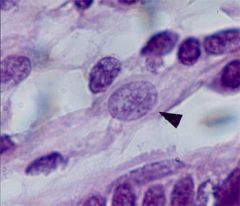
|
fibroblasts |
|
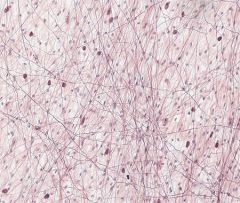
|
loose connective tissue |
|
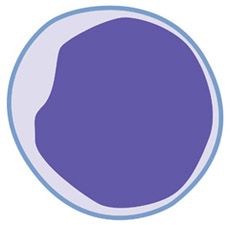
|
lymphocyte |
|
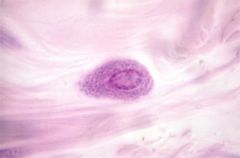
|
mast cell |
|

|
mesenchyme |
|
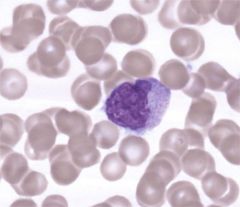
|
monocyte |
|
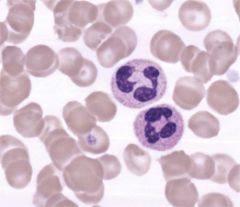
|
neutrophil |
|
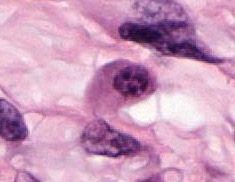
|
plasma cell |
|
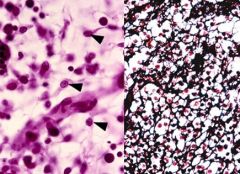
|
reticular connective tissue |
|
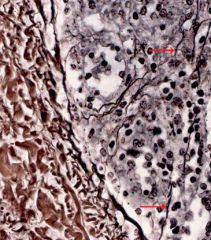
|
reticular fibers |

